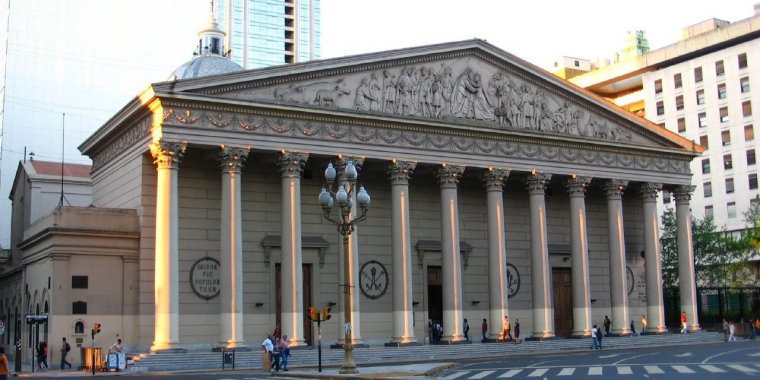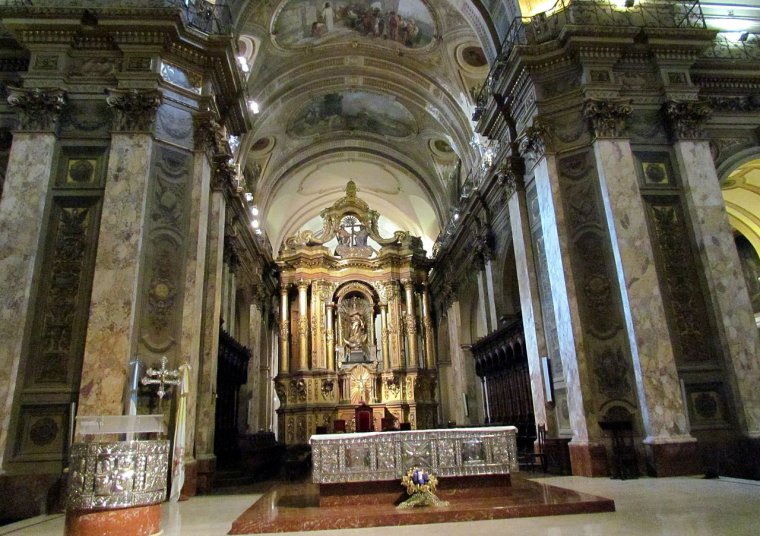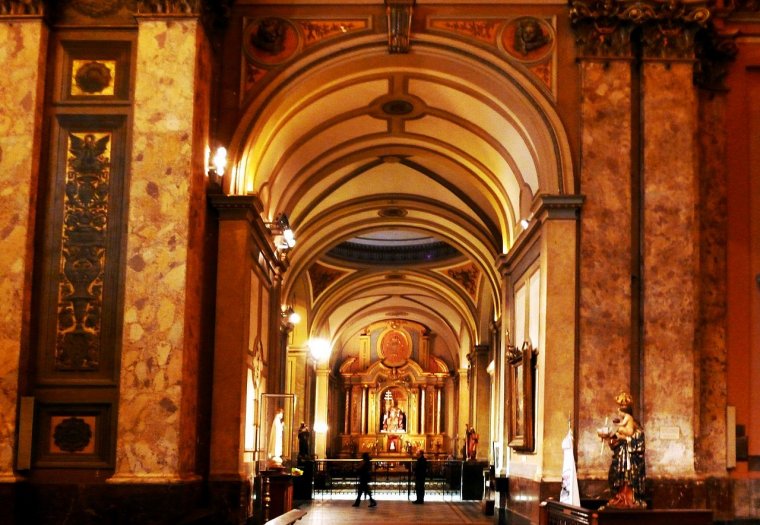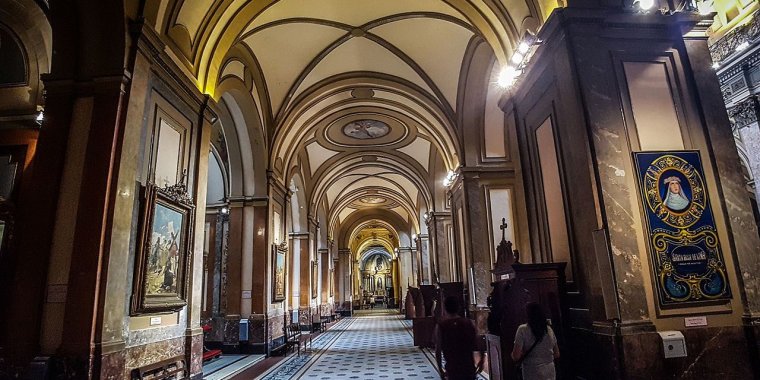| Published in Attractions / Places of Interest |
Buenos Aires Metropolitan Cathedral (Catedral Metropolitana de Buenos Aires), Argentina

Catedral Metropolitana de Buenos Aires. ![]()
The Buenos Aires Metropolitan Cathedral (Catedral Metropolitana de Buenos Aires) is the main Catholic church in Buenos Aires, Argentina. It is located in the city center, overlooking Plaza de Mayo, on the corner of San Martín and Rivadavia streets, in the San Nicolás neighbourhood. It is the mother church of the Archdiocese of Buenos Aires and the primatial church of Argentina.
The Cathedral of Buenos Aires was rebuilt several times since its humble origins in the 16th century. The present building is a mix of architectural styles, with an 18th-century nave and dome and a severe, 19th-century Neoclassical façade without towers.
The interior keeps precious 18th-century statues and altarpieces, as well as abundant Neo-Renaissance and Neo-Baroque decoration.

Catedral Metropolitana de Buenos Aires. ![]()
The Cathedral of Buenos Aires is a Latin cross building with transept and three-aisles with side chapels connected by corridors. Originally the interior was only decorated with altarpieces, but at the end of the 19th century the walls and ceilings of the church were decorated with frescoes depicting biblical scenes painted the Italian Francesco Paolo Parisi.
In 1907, the floor of the cathedral was covered with Venetian-style mosaics designed by the Italian Carlo Morra.

Catedral Metropolitana de Buenos Aires. ![]()
The cathedral still has some elements dating from colonial times. The most important is the main gilt wood altarpiece in Rococo style, dating from 1785 and executed by Spanish sculptor Isidro Lorea. The altarpiece occupies the main chapel and has a statue of the Virgin Mary and a representation of the Holy Trinity in its canopy.
Another notable colonial sculpture is the Christ of Buenos Aires, a large image of the crucified Christ located in the altarpiece of the lateral arm of the transept. The statue was carved by Portuguese sculptor Manuel do Coyto in 1671 and is the oldest in the cathedral.
The two pulpits of the cathedral, in transitional Rococo-Neoclassical style, were created in 1789–1790 by the Spanish sculptor Juan Antonio Gaspar Hernández, who would later (1799) direct the first art school of Buenos Aires.

Catedral Metropolitana de Buenos Aires. ![]()
An 1871 Walcker organ (Opus 263) is at the chorus section. It has more than 3500 pipes, and was made in Germany with the finest materials available at that time. This organ is quite well conserved and its intonation was preserved as close as possible to the original. It is currently recognised as one of the finest Walcker Organs ever manufactured.
The Cathedral itself could be considered as a pictorial museum as well. E.g., for the Calvarium (14 stations, always present in any catholic church), there are 14 magnificent pictures, made "al óleo", this is, with oil painting and traditional canvas, all originals, with dimensions of more than 1.5 by 1 metre (4 ft 11 in by 3 ft 3 in) each. (Wikipedia)
Estival hours since january 2, 2019
Monday to Friday:
Holy Mass: 8:30; 12:30 and 17:30.
Confessions: from 10:30 to 12:00 and from 16:00 to 17:15.
Saturdays:
Holy Mass: 11:30 and 17:30.
Confessions: from 11:00 to 12:30.
Sundays:
Holy Mass: 10; 11:30 and 17:30.
YOU MAY ALSO LIKE






 If you own or manage a travel-related business such as a hotel, a bed-and-breakfast, a restaurant, a pub or a cafeteria, you can create a web page for your business for free on Titi Tudorancea Travel Info. » |